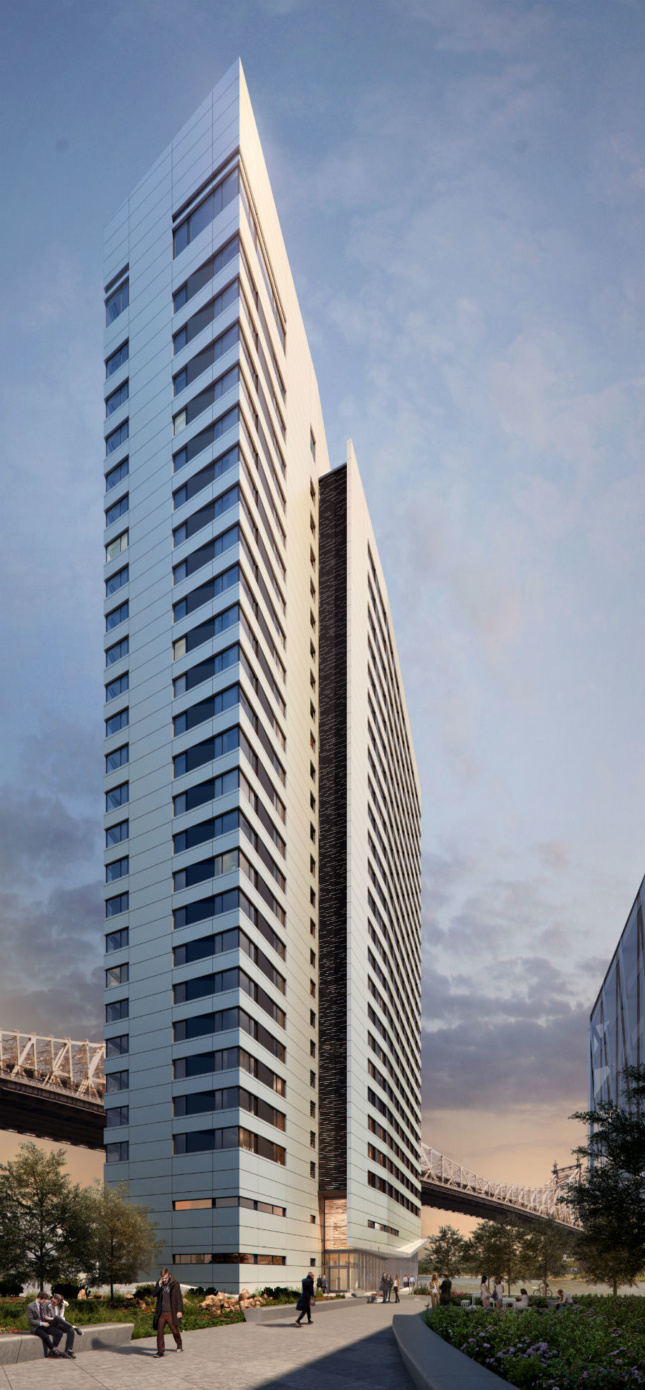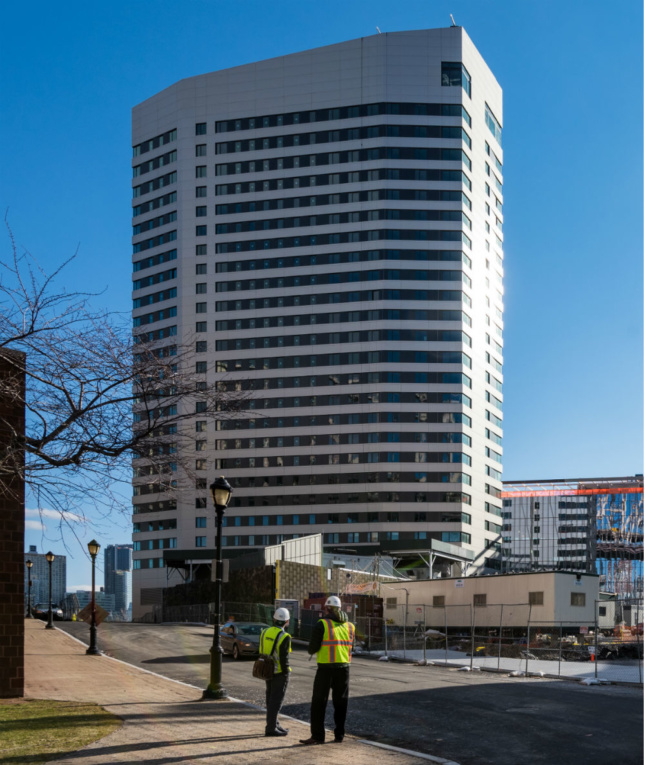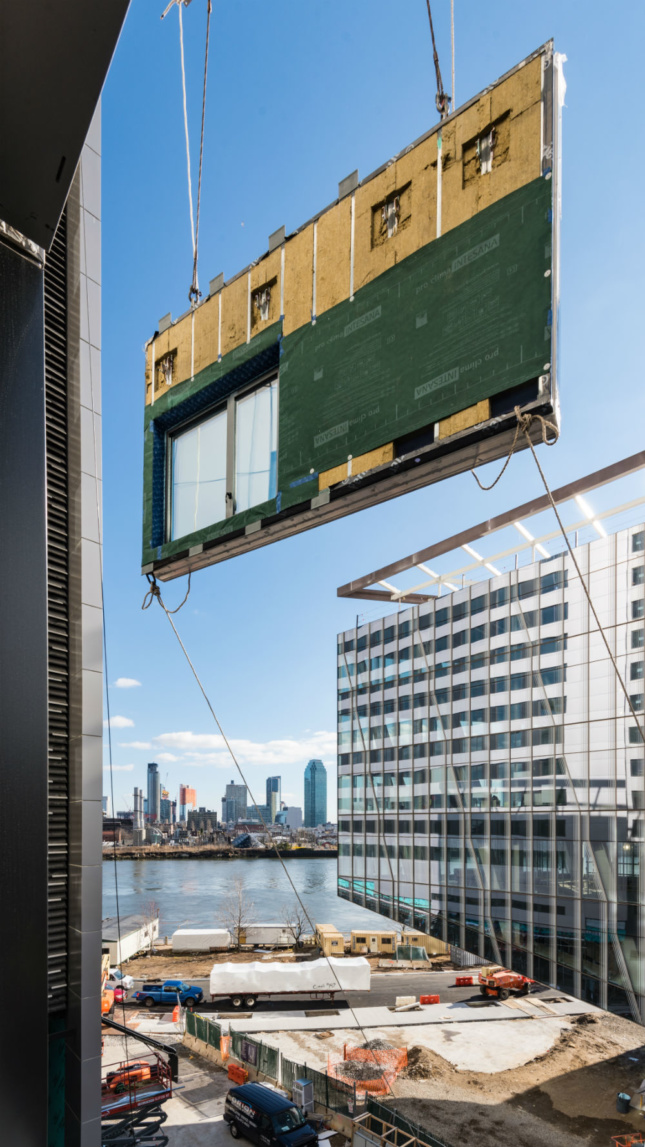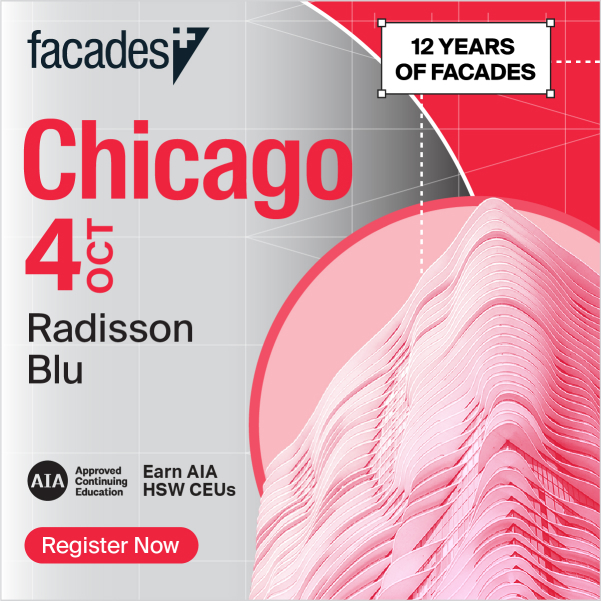[et_pb_section bb_built=”1″][et_pb_row][et_pb_column type=”4_4″][et_pb_text _builder_version=”3.0.106″ background_layout=”light”]
Today at Facades+ New York, The Architect’s Newspaper’s conference series on innovative building envelopes, AEC professionals gathered for a day of talks on the challenges and opportunities presented by the design and construction of high-performance facades.
To kick off the afternoon session, Blake Middleton, partner at Handel Architects and Lois Arena, senior mechanical engineer at SWA convened to talk about “The House” at Cornell Tech. The 26-story, 350-unit building, on Roosevelt Island on the East River, is the largest Passive House–certified structure in the world. AN editor-in-chief William Menking was on hand to moderate the post-talk Q+A.

Passive House certification, Arena explained, is the most rigorous building standard in the world. Why? The certification is based on performance—and the performance levels that Passive House demands are five to ten times higher than current building codes require. So, to meet the exacting standards, Arena and Blake revealed just how they rose to that challenge with their project at Cornell Tech.
There are six key factors, Arena said, to achieving the certification: siting, compact shape, the proper enclosure, a low energy HVAC system, energy efficient appliances and lighting, and, crucially, user-friendliness.

The Cornell Tech building is sited due south to maximize solar gains. Middleton added that minimizing the facade’s exposed surface area was key to the certification: the designers used a “wrap” metaphor for what the facade might be, a form that’s connected to the geology of the island. With a facade that’s 23 percent glass, “the design goal was to break down that scale and solidity with banding,” he said.
Functionally, the team used a prefabricated panelized wall frame for the facade, both for quality control and to achieve desired R-values of 19-40, depending on the wall’s thickness at various points.

To really double down on efficient energy use, The House has a feedback system to encourage occupant participation whereby residents can see how much energy they are using. The system, as a result, promotes friendly competition between floors to meet or beat projected energy use. Meanwhile, a centralized mechanical ventilation system helps maintain optimal airflow, but each room—per Passive House standards—comes equipped with fully operational windows to encourage natural ventilation.
Building on the success of the Cornell Tech project, the team’s next projects include a 700-unit Passive House–certified affordable housing development in East Harlem. To find out more about The House, check out another Q+A AN did with Blake earlier this week as well as more previous coverage here.
[/et_pb_text][/et_pb_column][/et_pb_row][/et_pb_section]




